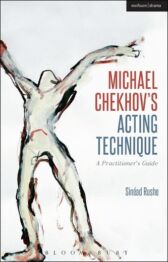Synopsis
Michael Chekhov's Acting Technique - A Practitioner's Guide
Published by Methuen
Sinéad Rushe's book provides a complete overview of the whole method, and includes illuminating explanations of its principles, as well as a wide range of practical exercises that illustrate, step by step, how they can be applied to dramatic texts
Part One provides an outline of the ideas that underpin the work, which help to prepare practitioners to become responsive and receptive, and to awaken their imagination
Part Two charts a journey through the foundational psychophysical exercises that can both orient an actor's training routine and be applied directly to the development of a role
Part Three focuses on more specific and elaborate methods of scene work, characterisation and the art of transformation
Drawing on the full range of Chekhov's writing in English and French, this book also examines unpublished material from the Dartington Hall archives and features interviews with actors who have worked with the technique, including Simon Callow and Joanna Merlin
It illustrates Chekhov's approach by referring to Rushe's own productions of Nikolai Gogol's short story Diary of a Madman and Shakespeare's Othello, as well as characters and scenes in Sarah Kane's Blasted and the contemporary American television series Breaking Bad
Michael Chekhov's Acting Technique is an accessible, comprehensive and contemporary point of reference for those already trained in the method, as well as an initiation and toolkit for practitioners who are just beginning to discover it
TABLE OF CONTENTS
Preface
Introduction: Guiding Principles
A Note on the Context of Chekhov's work
Part One: Preparation
The ideal centre
The four brothers: feeling of ease
The four brothers: feeling of form
The four brothers: feeling of beauty
The four brothers: feeling of entirety
Radiating Expansion and contraction
Part Two: Practice
Qualities of movement: moulding, floating, flying, radiating
Further qualities of movement: staccato/legato, curved/straight
Directions in space Archetypal gesture
The three sisters: rising, falling, balancing Image and imagination Improvisation
Transition: Transformation
Part Three: Performance
Imaginary body
Imaginary centre
Stick/ball/veil Archetypes
Psychological gesture
Subjective atmosphere
Objective atmosphere
Extras: ghost exercise, character biography
Conclusion: Theatre of the Future
Chronology of Michael Chekhov's Career
 $31.99
$31.99